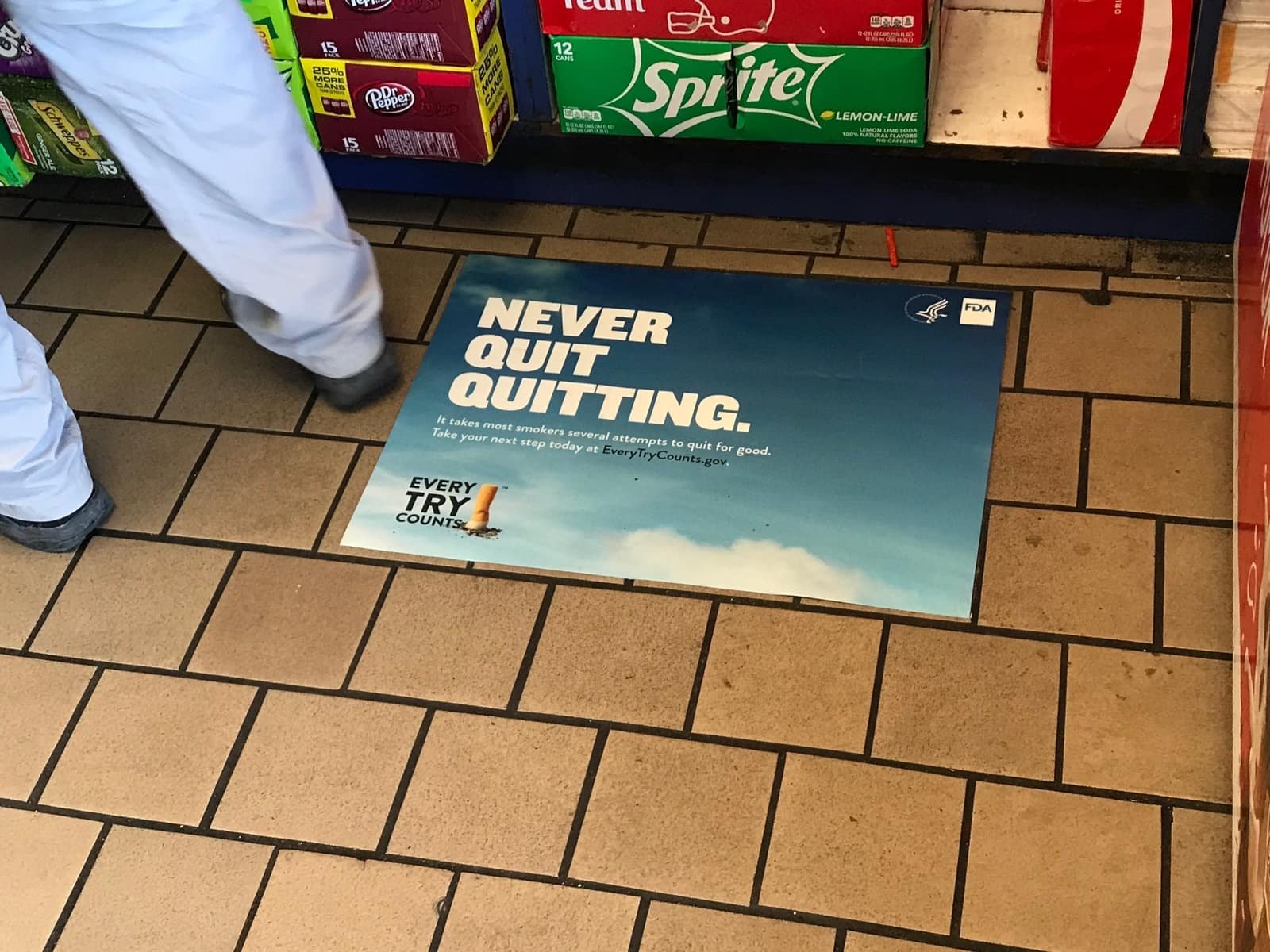Grocery Store Advertising
Grocery stores are one of the most effective environments for Out-of-Home (OOH) advertising, offering high visibility and repeated exposure to engaged shoppers. Our grocery store network connects your message with consumers at key decision-making moments—whether they’re walking in, browsing aisles, or checking out. With placements ranging from eye-level posters and digital screens to checkout displays, we help brands influence purchase behavior where it matters most.

Grocery Store Advertising Nationwide — Digital and Static Formats
Grocery store and supermarket advertising have evolved into a powerful blend of digital and static formats, each with distinct advantages.
Digital displays offer dynamic, high-impact visuals that can be updated instantly to highlight current promotions, seasonal offers, or store announcements. Positioned in high-traffic areas—such as entrances, checkout lanes, and popular aisles—these screens capture shopper attention at key decision-making moments.
Static displays, while less flexible, remain a cost-effective and dependable advertising medium. Ideal for long-term promotions, they take many forms, including posters, standees, and shelf signage, providing consistent visibility throughout the store.
By combining digital’s adaptability with static’s staying power, grocery stores can engage a wide range of shoppers—reaching tech-savvy customers with interactive messaging while appealing to those who prefer traditional formats. Together, these channels deliver a well-rounded, high-visibility in-store advertising strategy that drives both awareness and sales.

What are some different types of grocery store advertising that you offer?
In-Store Displays: In-Store Displays include endcap displays (at the end of aisles), shelf talkers (small signs attached to shelves), and free-standing displays. They are strategically placed to catch the shopper's eye.
Digital Screens and Interactive Kiosks: Many stores now use digital screens for advertising products. These can show rotating ads or interactive content, including recipes or product information.
Floor Graphics: Advertisements placed on the floor, often leading customers to specific products or sections.
Shopping Cart Advertisements: Ads placed on the handle or sides of shopping carts. They're visible to the shopper throughout their entire store visit.
Checkout Counter Ads: These are placed around or near the checkout area, including the conveyor belt, to capture attention while customers wait in line.
Grocery Cart Advertising: Grocery cart ads are a unique and effective marketing strategy that targets consumers directly at the point of purchase. It involves placing advertisements on shopping carts used in grocery stores and supermarkets.
Grocery Cart Advertising
Shopping cart ads are a high-visibility form of out-of-home (OOH) advertising that place branded messaging directly on shopping carts at grocery stores and big-box retailers.
These ads offer prolonged exposure, as shoppers interact with carts for an average of 30–45 minutes per store visit, making them ideal for building brand recall and influencing purchase decisions in real-time. Positioned at the point of decision-making, cart ads are especially effective for CPG brands, local services, and health campaigns targeting families, seniors, or budget-conscious consumers. With full-store mobility and repeat impressions throughout the shopping journey, they deliver consistent visibility across every aisle.
What are some benefits of grocery store advertising?
Targeted Audience Reach: Grocery stores attract a diverse but consistent stream of shoppers, providing advertisers with access to a wide demographic. This allows for targeted marketing efforts, as different sections of the store attract different types of customers.
High Engagement: Shoppers are more likely to notice and engage with advertisements in a grocery store setting. Since they are already in a shopping mindset, they are more open to discovering new products or promotions.
Increased Brand Awareness: Regular exposure to place-based media in grocery stores can significantly boost brand recognition. As customers shop, they become familiar with the brands and products advertised, which can influence their purchasing decisions both immediately and in the future.
Contextual Relevance: Advertisements can be placed in specific store sections that align with the product being advertised. For example, a promotion for pasta sauce can be more effective when placed near the pasta aisle.
Flexibility and Timeliness: Digital place-based media offers the flexibility to change content quickly and easily, allowing for timely and relevant promotions. This is particularly useful for advertising limited-time offers or seasonal products.
Increased Sales: Effective place-based media can directly influence sales by prompting impulse buys or reminding customers of products they need. This is especially true for promotions and discounts advertised at the point of purchase.
Enhanced Shopping Experience: Well-designed and strategically placed advertisements can enhance the overall shopping experience. They can provide useful information, entertain, or even guide shoppers through the store.
Measurable Impact: With advancements in digital technology, the effectiveness of place-based media can be measured more accurately through metrics like foot traffic, sales data, and even customer engagement.
Grocery store advertising promotions can lead to an increase in product sales by as much as 50%
(Grocer Industry report)






Let’s Talk.



